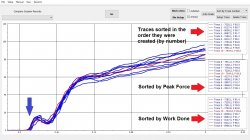dryhumor
When an old man dies, a library is lost forever...
The pressure in a vessel (case) should be common to each surface within the void (static pressure) in the case. Expansion should exert a pressure force that increases at ignition. As the pressure rises it should reach and surpass the pressure (tension) of the case neck, pushing the bullet forward. As the explosion within the case increases more volume is required to allow gas expansion. The case neck then expands. The gases follow the bullet down the bore.Apparently the question has been answered to some and I missed it...the bullet moves before the case opens. Or so it would seem. Maybe it's opened for long, heavy bullets but not yet for the short and stubbies, or with a long freebore.
IDK, so I'm asking and would like a better understanding too. If it's open, neck tension, by whatever term, should not affect tune. If not, then yes, especially if jumping. I would conclude from that single statement, jamming is a good thing. Again, I'm asking. I think we must first conclude if the neck is open or not..or somewhere in between, before we can go forward with this subject but that's just my 2 cents and worth less,, probably.
That’s how I visualize it.
ETA After reading mikecr reply I can visualize with that also. The brass being softer and less durable and able to move first.
But what about the shoulders? Wouldn’t they perform like a forcing cone to direct the energy to the base of the bullet?
Last edited:











